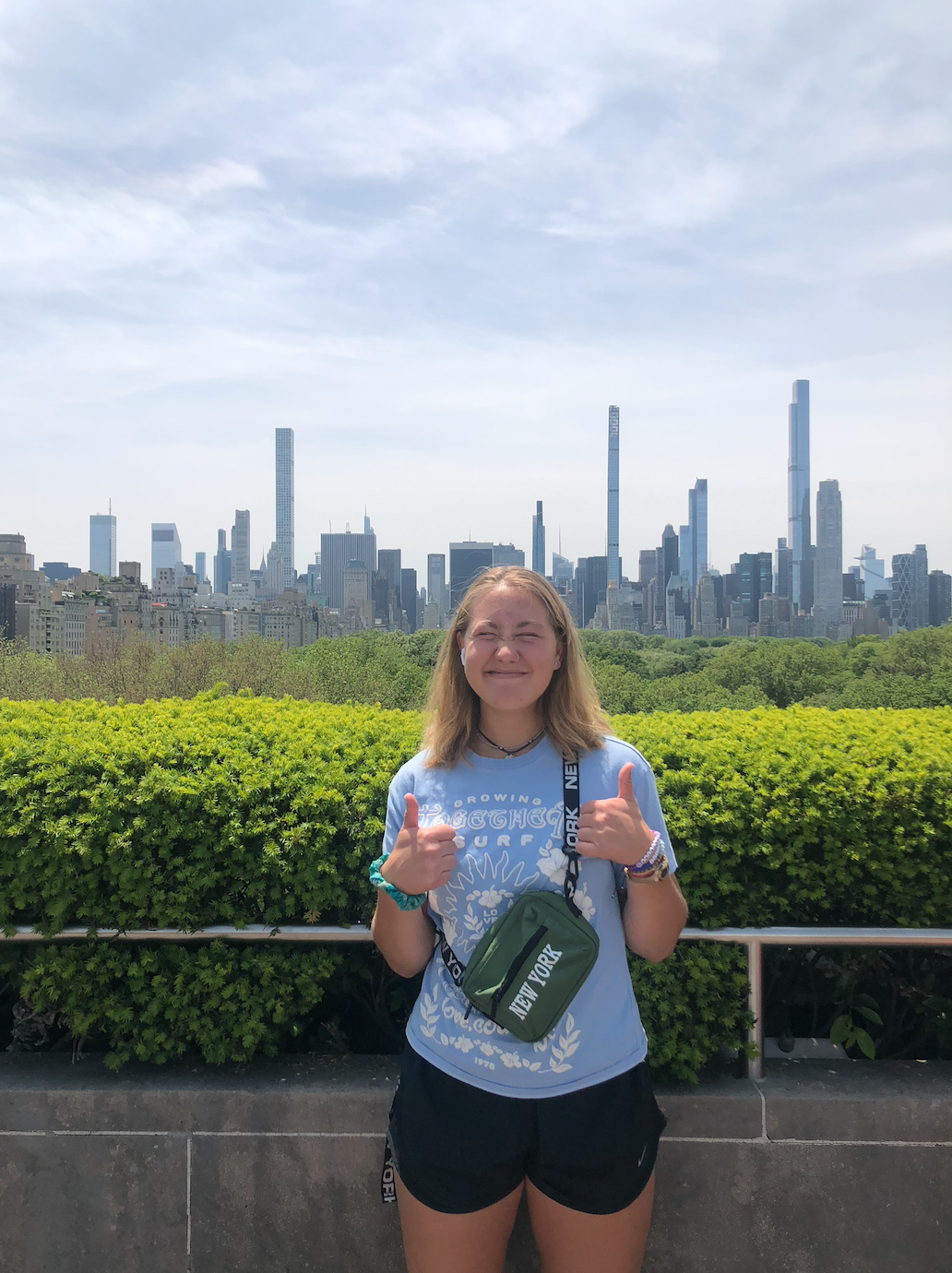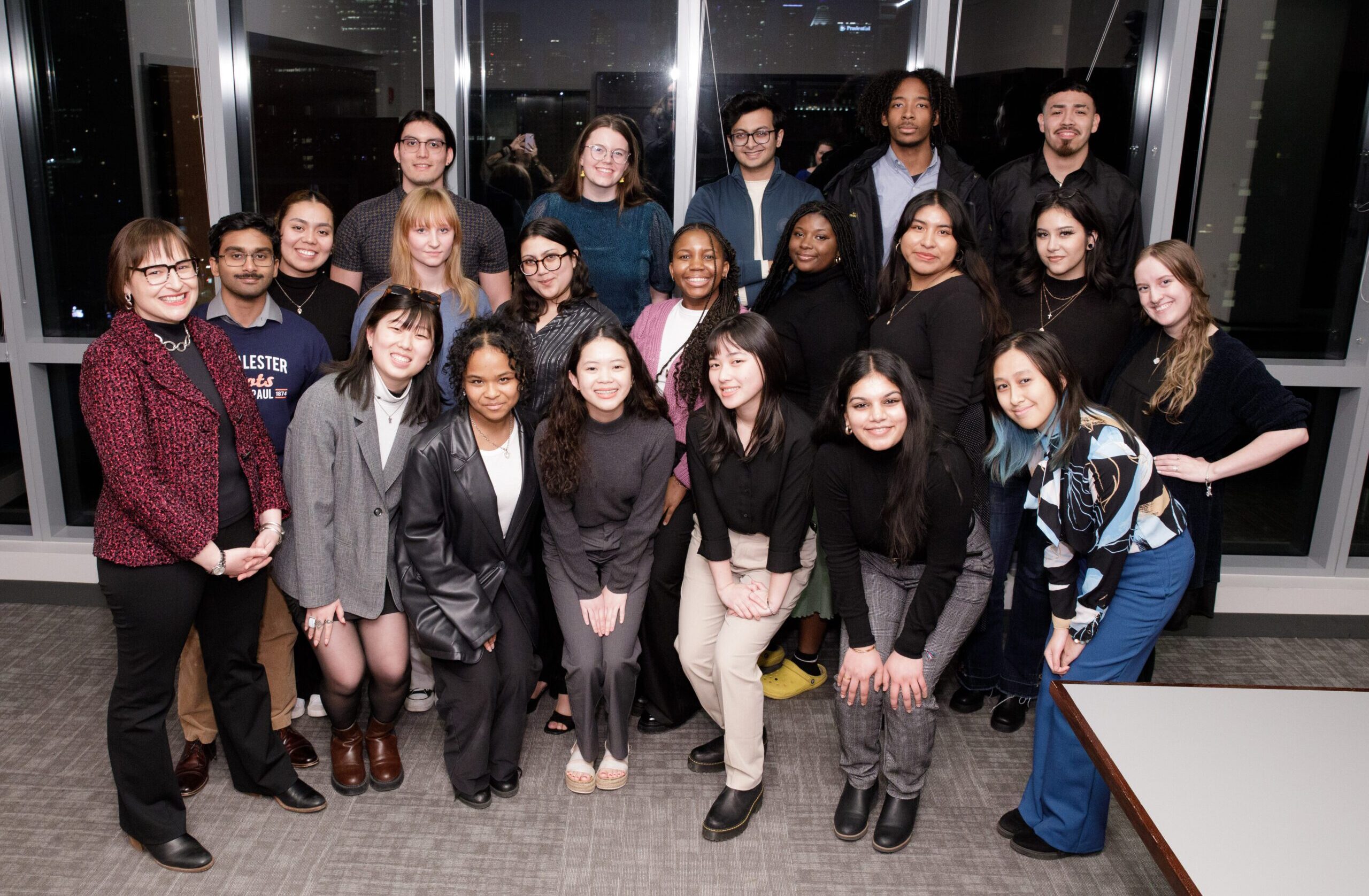It was barely 24 hours after they had arrived in the city, and the Chicago Program students were huddled in small groups figuring out how to tackle the scavenger hunt, a staple of the program’s orientation week.
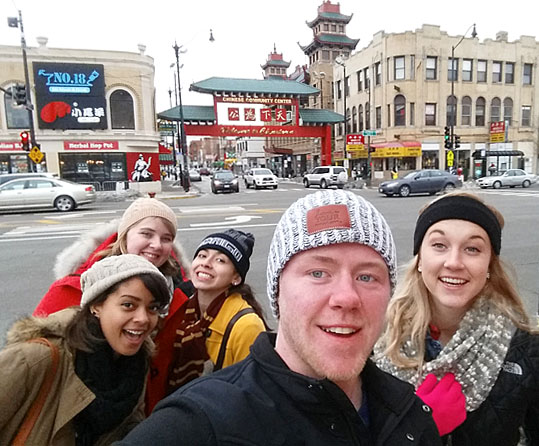 At the Gateway to Chinatown.
At the Gateway to Chinatown.
Photo: Gabe Saemisch (Luther College)
Each group was getting set to head off to its assigned neighborhood — Hyde Park, Chinatown, Wicker Park, or Uptown — with just a few basic instructions to follow: travel by public transportation, taking both buses and trains; find the four “notable sites” listed for their neighborhood; ask a local resident to describe their community; and be back at the program office in three hours or less.
Along the way, there were bonus points to be earned — snap a photo of a pigeon or a street performer, for example, or correctly answer some Chicago-centric questions (such as, what ingredients come on a Chicago style hotdog and what condiment do Chicagoans never add?*) — and points to be lost by missing the mark on any of the basic instructions (especially the one about being back on time!).
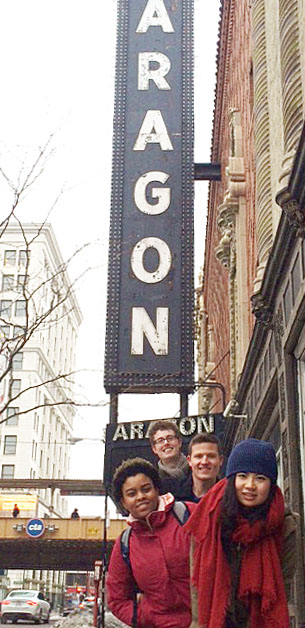 In Uptown, outside the historic Aragon Ballroom.
In Uptown, outside the historic Aragon Ballroom.
Photo: Nikki Lewis (Hanover College)
“This first week we’re trying to get students comfortable in the city, give them some historical context for what’s happening in the city of Chicago, and have them begin to try out experiential education,” said Chicago Program faculty member Dorothy Burge. “So we’re going to have an action, and then we have a reflection. After the reflection, we ask ‘OK, what does this mean?’ and then how does this inform the next assignment that you’re going to have? It’s how things build, and it’s a cycle – the experiential learning cycle.”
By early evening the students had polished off a dinner of Middle Eastern food and the groups were reporting on their scavenger hunt excursions by answering three questions and giving examples from the day’s travels.
- What, in your own words, is the difference between traditional education and experiential education?
- How do you anticipate being challenged by this model?
- To get the most out of this type of learning, what do you need to do?
A number of themes emerged during the discussion: keeping an open mind is really important for experiential learning, and so is doing your research … the value of learning from mistakes … be patient and flexible, because things don’t always go as planned … we’re not only learning from the community that we’re experiencing, but we’re also learning from classmates who are experiencing it at the same time … experiential learning is about teamwork and exploration.
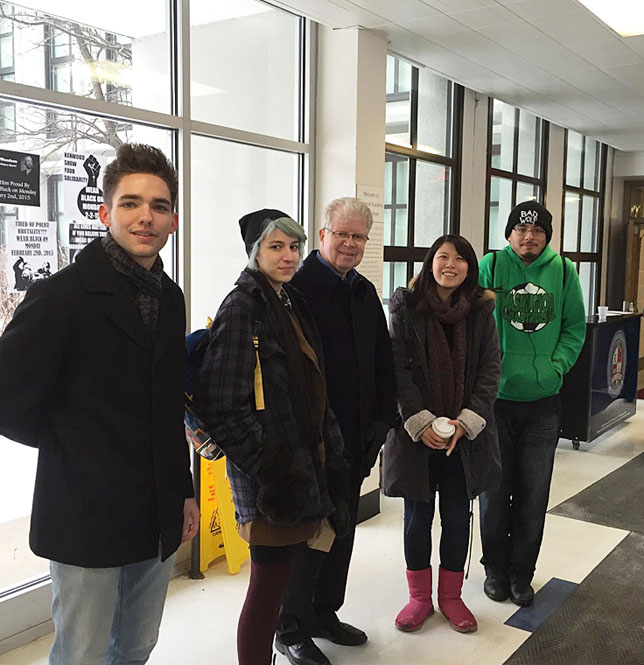 Visiting Kenwood Academy in Hyde Park.
Visiting Kenwood Academy in Hyde Park.
Photo: Corey Lunden (Earlham College)
Each group added insights and Burge followed up with more questions. What did you learn this afternoon? What questions were raised? What are the roles — and responsibilities — of teacher and student in experiential learning?
“You’re here for 15 weeks and you all have varied interests, right?” Burge asked. “So if you know what neighborhoods you’re going to, what could you do to make a visit to that neighborhood something that would be meaningful for you?”
Interspersed with the analysis were snippets of some of the afternoon’s experiences: a friendly reception at a neighborhood high school, where one group stopped in to ask some questions and got an impromptu tour from the assistant principal … sampling candies the students had never seen before at a shop in Chinatown … checking out the vintage interior of a legendary jazz club … and a search for bonus points that unexpectedly netted a photo with Chicago Mayor Rahm Emanuel!
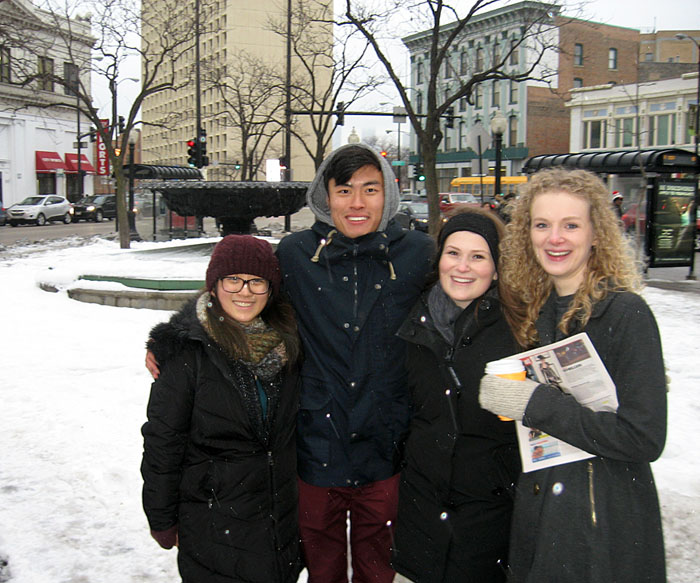 At the Polish Triangle in Wicker Park.
At the Polish Triangle in Wicker Park.
Orientation week is a process of walking — well, more like running, given the pace — the students through the program’s weekly schedule of four academic components: Internship, Seminar, Independent Study Project, and Core Course (see the list of orientation activities below). For each component, the students get what Burge calls “the what, why, and how” — what topics they will cover, why the courses and activities are important, and how the program’s components work together as a cohesive whole.
As the first full day of the program came to a close, Burge wrapped up the scavenger hunt reflection session by talking about how she tries to engage students in ways that will lead them to use their learning — about the city and about themselves — to take action.
“We do a lot of group projects, and that’s because we want you to develop your sense of agency, to know that you have this knowledge and life experience, and to decide what are you going to do with it,” she said. “I’m trying to come at you on different levels — intellectually, emotionally, and then sometimes just kind of shake you up, so you say ‘What am I going to do with this?'”
Spring 2015 Orientation Week |
||||
Sunday
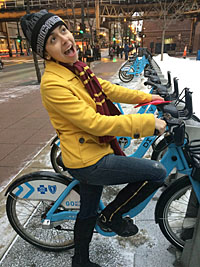 Monday
At right: A bonus point for riding a Divvy bike! (Photo: Kinzie Schwiegert, Illinois Wesleyan University) |
Tuesday
Wednesday
Thursday
Friday
|
* A Chicago style hot dog is dressed with mustard, onion, relish, tomato, sport peppers, a pickle, and celery salt. And a “true” Chicagoan will never put catsup on a hot dog.
Links:
- Chicago Program: Arts, Entrepreneurship, & Urban Studies
- Chicago Program academic components and faculty & staff bios
- Read more about the Chicago Program:
Welcome to Hyde Park! Now Start Walking…
Community-based Approach Activates Students’ Learning and Agency






